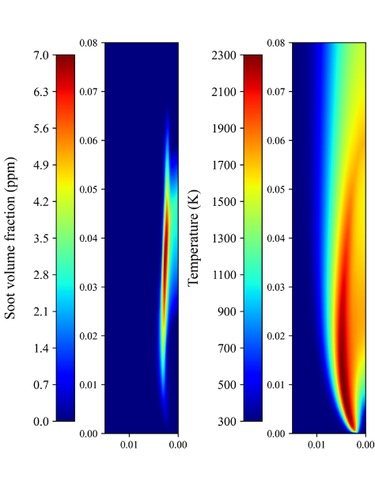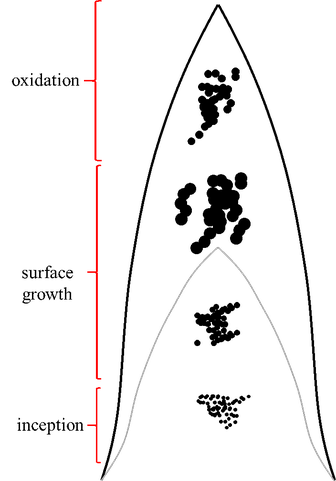Soot modeling in fire-driven flows
Researchers:
- Shahrooz Motaghian
- Tarek Beji (supervisor)
Description:
Soot particles are present in most combustion processes such as fires. These particles have negative health and environmental effects. Moreover, soot is the main contributor to thermal radiation, the dominant heat transfer mode in fire spread. The production and transport of soot occur via complex and detailed physical and chemical mechanisms. Several soot models have been mainly developed for industrial combustion processes. Unfortunately, they are not readily applicable to fire-driven flows because of (i) their substantial computational cost (due to the detailed chemistry scheme) and (ii) the complexity of the fuel molecule (which is sometimes unknown) in real fires. Therefore, it is essential to bear these aspects in mind when developing soot models for fire-driven flows. The Laminar Smoke Point (LSP) has been established as a reliable measure of the sootiness of fuels and a comprehensive LSP database is available for many combustible materials. Therefore, simple soot models have been developed based on this empirical parameter. This project aims to extend the capability of the LSP soot modeling concept, assess and improve the accuracy of its predictions in fire simulations under different conditions and scenarios. The model development will be carried out using OpenFOAM, an open-source CFD (Computational Fluid Dynamics) package. The assessment of the numerical results will be performed based on available experimental measurements reported in the literature for laminar diffusion flames (in a first stage) and then, turbulent flames.

